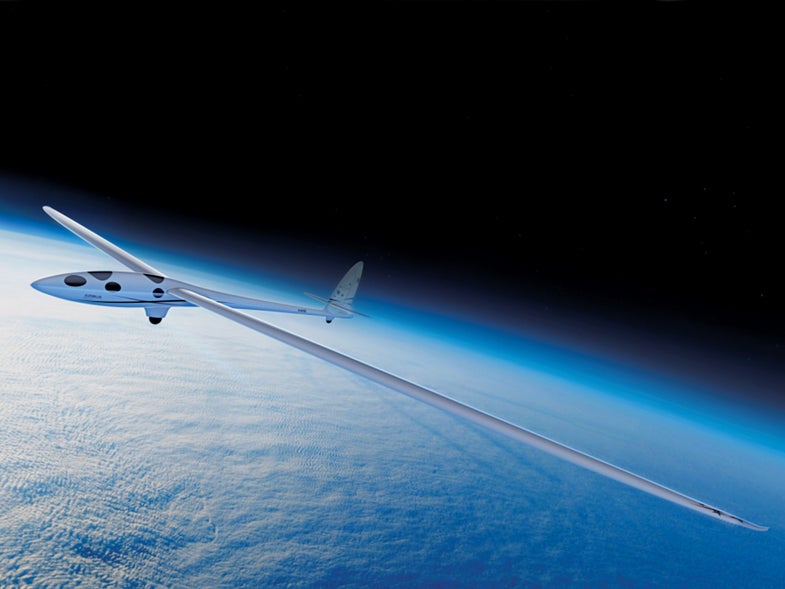The Perlan 2 Glider Will Fly 90,000 Feet Higher Than Most Aircraft
No jet fuel required

This summer, two pilots sandwiched in a 36-inch-wide cabin could take the Perlan 2 glider to 90,000 feet, higher than most aircraft have flown. To reach such heights, the glider will ride stratospheric waves—powerful and little-understood currents that flow over mountain ranges.
It will be flying in uncharted and unstable aeronautic territory, and between the rigors of thin air and blistering ultraviolet radiation, the slightest miscalculation could be disastrous. If successful, the Perlan 2 could expand the parameters of high-altitude flight, enhance climate science, and provide new insights on planetary exploration. All without burning a drop of jet fuel.

Wide Load
How It Works
Assisted launch: A 20 horsepower tow plane will use a cable to lift the glider up to 10,000 feet. Perlan 2’s pilots will then detach from the aircraft and continue their ascent using air currents and lithium-ion battery-powered flight instruments.
Tight quarters: Engineers built the 3-by-10-foot pressurized fuselage as small as possible to minimize drag and weight during flight. The cabin is circular (rather than the oval shape of most aircraft), so air pressure will push equally on all sides.
Treated windows: At 90,000 feet, the glider will be exposed to the deteriorating effects of solar radiation. A coating on the polycarbonate windows will absorb the rays. It will also help protect against frigid temperatures and maintain the Perlan 2’s structural integrity. If the windows crack, the cabin will depressurize and the pilots’ lungs will explode inside their chests.
Unique wings: Lightweight carbon-fiber wings help the glider to fly in the low-density air of the upper stratosphere. The airfoil—its aerodynamically shaped, 84-foot wingspan—maximizes efficiency and provides the ideal ratio of lift to drag.
Steady Flying: Along with a control stick, pilots will use ailerons and elevators—the movable sections of each wing—and a rudder to navigate turbulence. These help control the glider’s pitch, roll, and yaw.
If the windows crack, the cabin will depressurize and the pilots’ lungs will explode inside their chests.
Safe Descent: Without an engine to modulate its speed, the Perlan 2 will rely on airbrakes, which flip open and create drag to safely land. In case of a midflight emergency, the pilots can also deploy an 11-foot-diameter drogue parachute, often used by high-speed aircrafts.
Science Mission: The glider will be the first to collect scientific data on the powerful—and unpredictable—stratospheric waves. Aviation experts will use this research to forecast the waves more accurately, eventually enabling passenger planes to operate in the upper atmosphere, where they could fly farther and faster on less fuel (thanks to the reduced drag).
Martian Analog: The glider’s flying conditions will be similar to those found on Mars, and the team hopes to share any insights the craft gleans from its flight. “Somebody will build an airplane for Mars someday, and we’ll have a wealth of data for that person,” says Ed Warnock, the project’s CEO.
Climate Data: The flight has additional scientific implications. When the waves stretch high enough, they break, and chemicals from the troposphere are thrust into the stratosphere, where they can remain for decades. No one knows the effects of this atmospheric cocktail, and whatever data the Perlan 2 collects could help sharpen the forecast of humanity’s effects on climate change.
This article was originally published in the March/April 2016 issue of Popular Science.